Electric Charge and Electric Field Concepts
1/108
There's no tags or description
Looks like no tags are added yet.
Name | Mastery | Learn | Test | Matching | Spaced |
|---|
No study sessions yet.
109 Terms
Electrostatics
The electricity at rest, involves electric charges, the forces between them, and their behavior in materials.
Charging by Friction
Charging by rubbing two different materials together.
Conservation of Charge
The net charge of the two materials after rubbing is still zero between the two.
Fundamental Rule of Electricity
In an electrical phenomena, like charges repel and opposite charges attract.
Charging by Conduction
Charging by contact where electrons are transferred from one material to another.
Triboelectric Series
A series used to determine the charge of materials when rubbed together.
Electroscope
A scientific instrument used to detect the presence and measure the amount of electric charge on an object.
Charging by Induction
Charging a conductor without touching it, responding to the electrostatic force.
Grounding Wire
Refers to the phenomenon where a current is induced in a grounding wire due to electromagnetic fields.
Quantity of Charge
Can be defined in terms of the number of electrons, but the Coulomb (C) is a better unit.
Coulomb
1 C = 6.25 x 10^18 electrons.
Electric Field Direction
The direction of the field is away from the +Q charge.
Units of Charge
The coulomb is a very large unit for static electricity, often requiring metric prefixes.
Microcoulomb (μC)
1 μC = 1 x 10^-6 C.
Nanocoulomb (nC)
1 nC = 1 x 10^-9 C.
Picocoulomb (pC)
1 pC = 1 x 10^-12 C.
Electric Field Near a Negative Charge
The field E in the vicinity of a negative charge -Q is toward the charge.
Coulomb's Law
Describes the force between two charged objects.
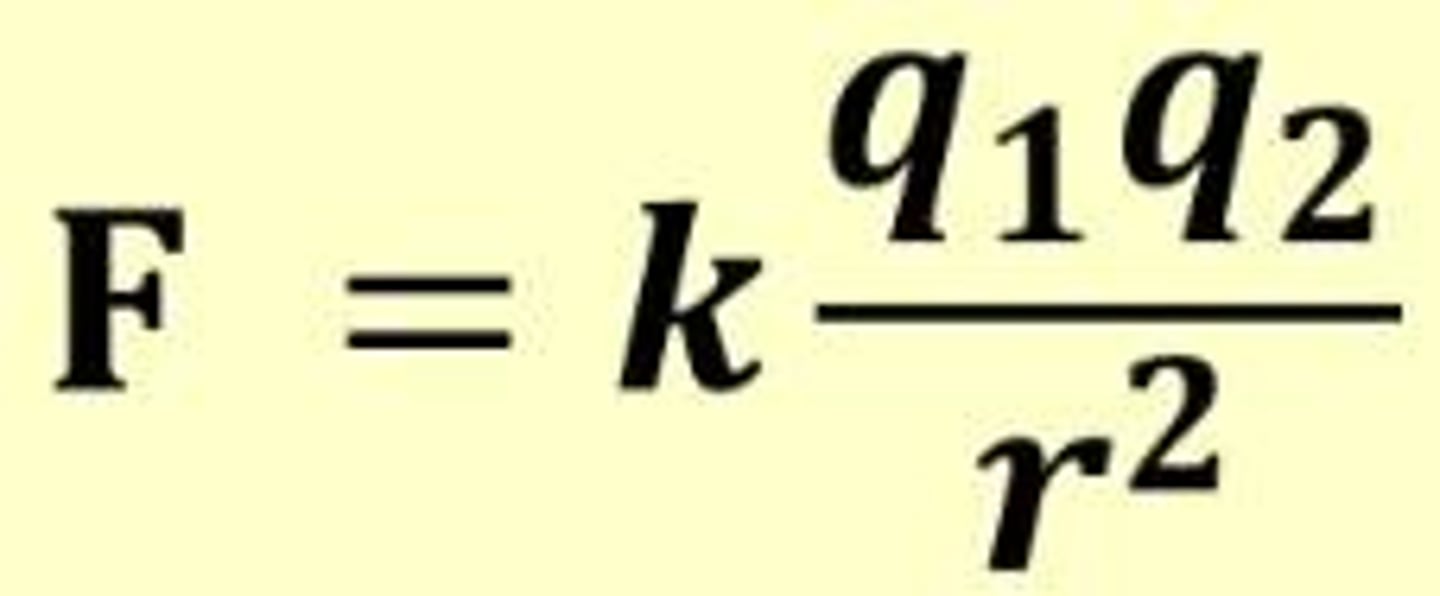
Force of attraction or repulsion
The force of attraction or repulsion between two point charges is directly proportional to the product of the two charges and inversely proportional to the square of the distance between them.
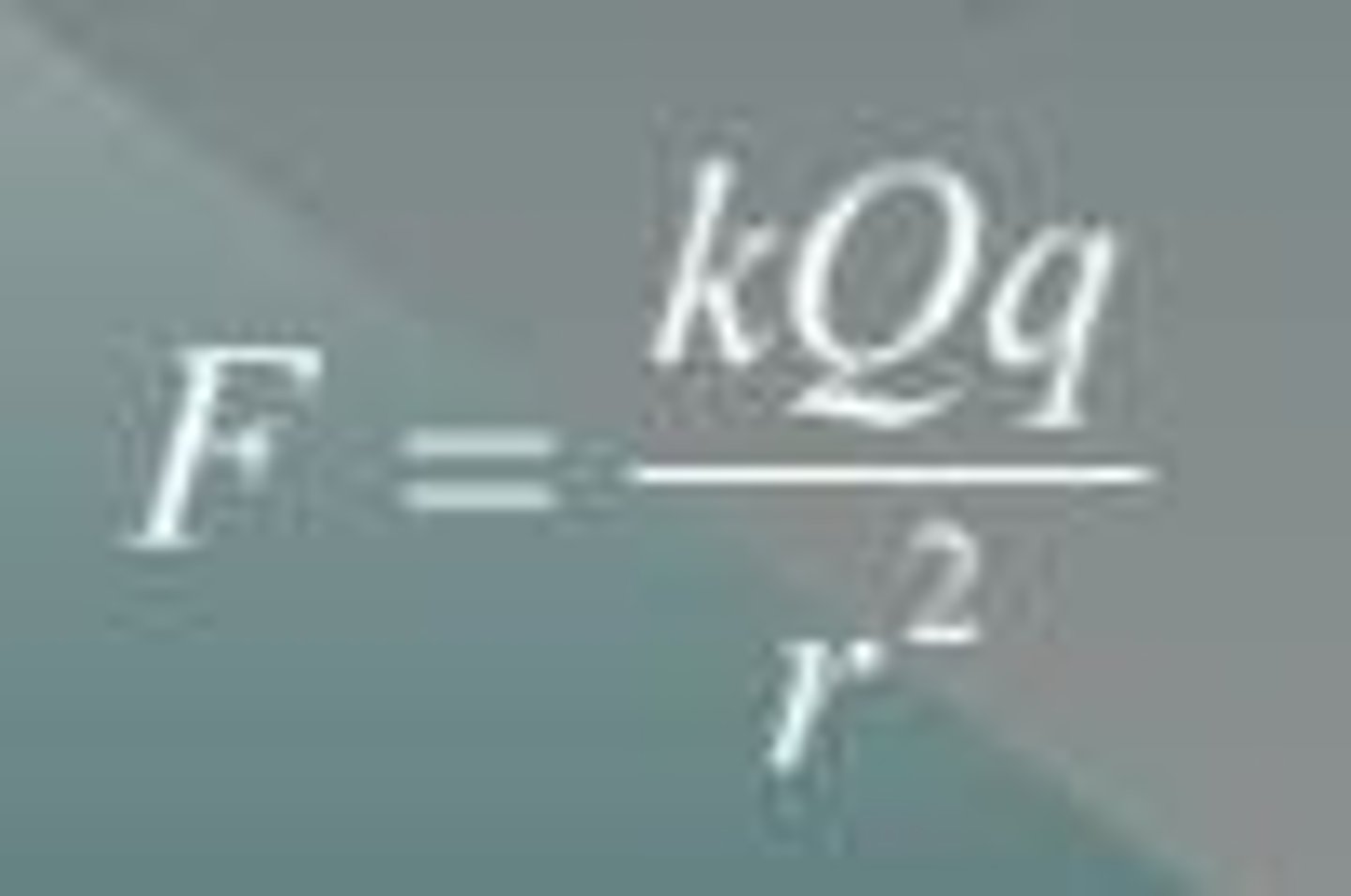
Electric field lines
Imaginary lines that represent the direction of the electric field.
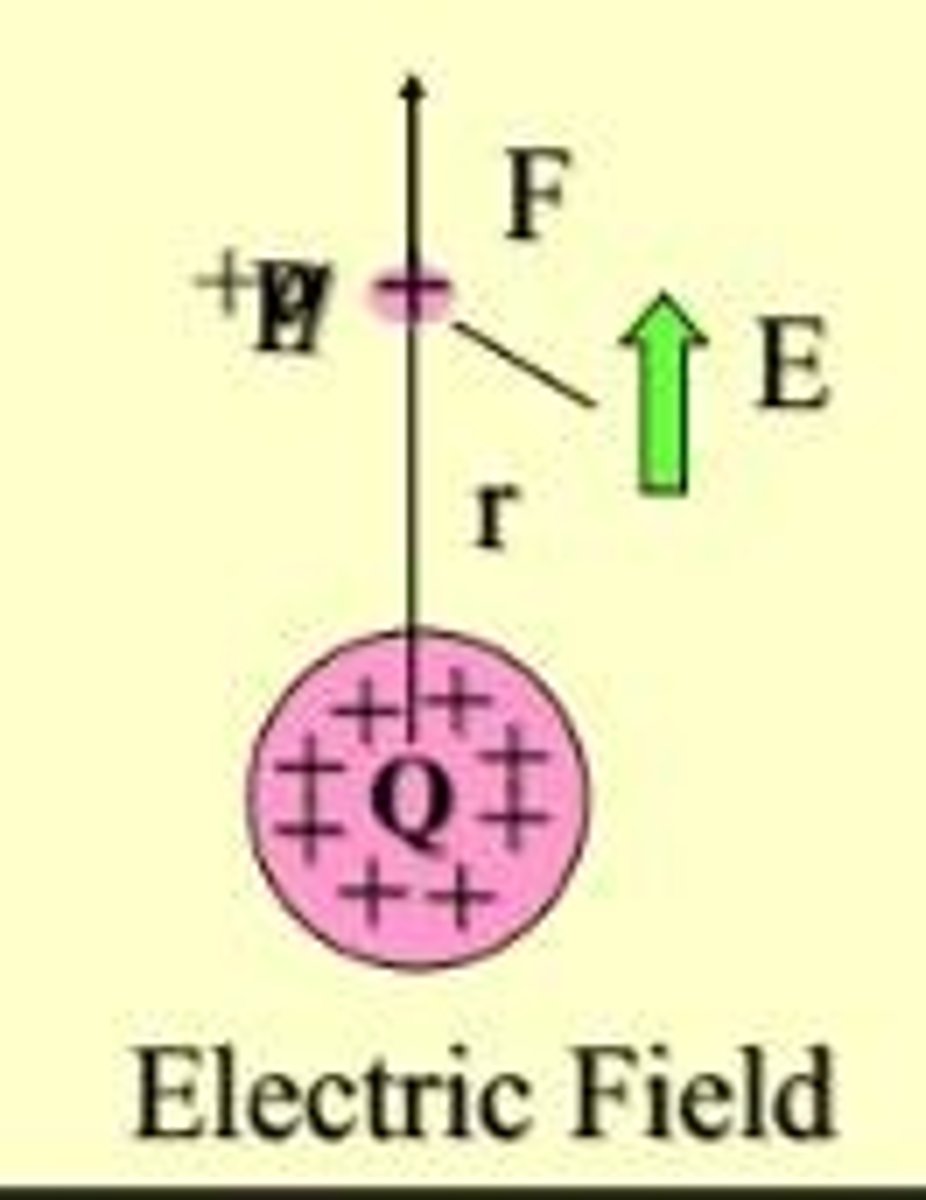
Electric field vector
The electric field vector is locally tangent to the field line.
Superposition principle
It states that the total electric force a particular charge experiences due to the number of other charges is the vector sum of all individual forces.
Two equal but opposite charges
A condition in electric force interactions.
Two identical charges (both +)
A condition in electric force interactions.
Two opposite charges, unequal magnitude
A condition in electric force interactions.
Two identical charges (both -), unequal magnitude
A condition in electric force interactions.
Van de Graaff generator
It is an electrostatic machine that is used to generate high voltages, often in the range of hundreds of thousands or even millions of volts.
Magnitude of electric field
The force per unit charge (N/C) that would be experienced by any test charge placed at that point.
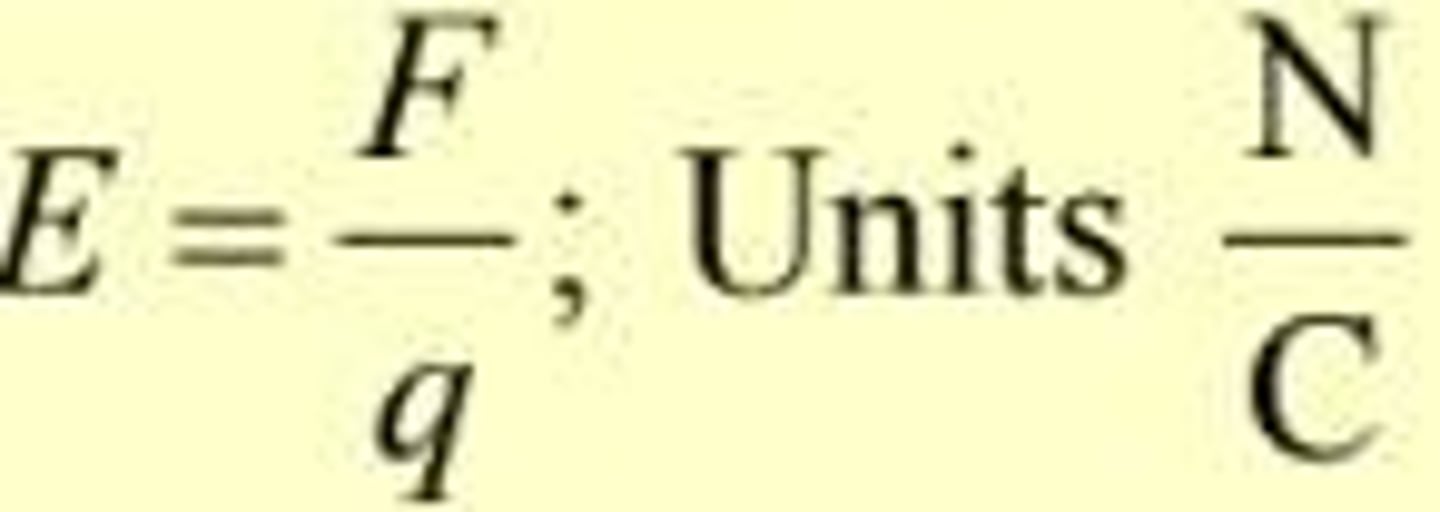
Direction of E
The direction of E at a point is the same as the direction that a positive charge would move if placed at that point.
Electric field at a distance r from a single charge
Any charged particle placed in it will experience an electric force.
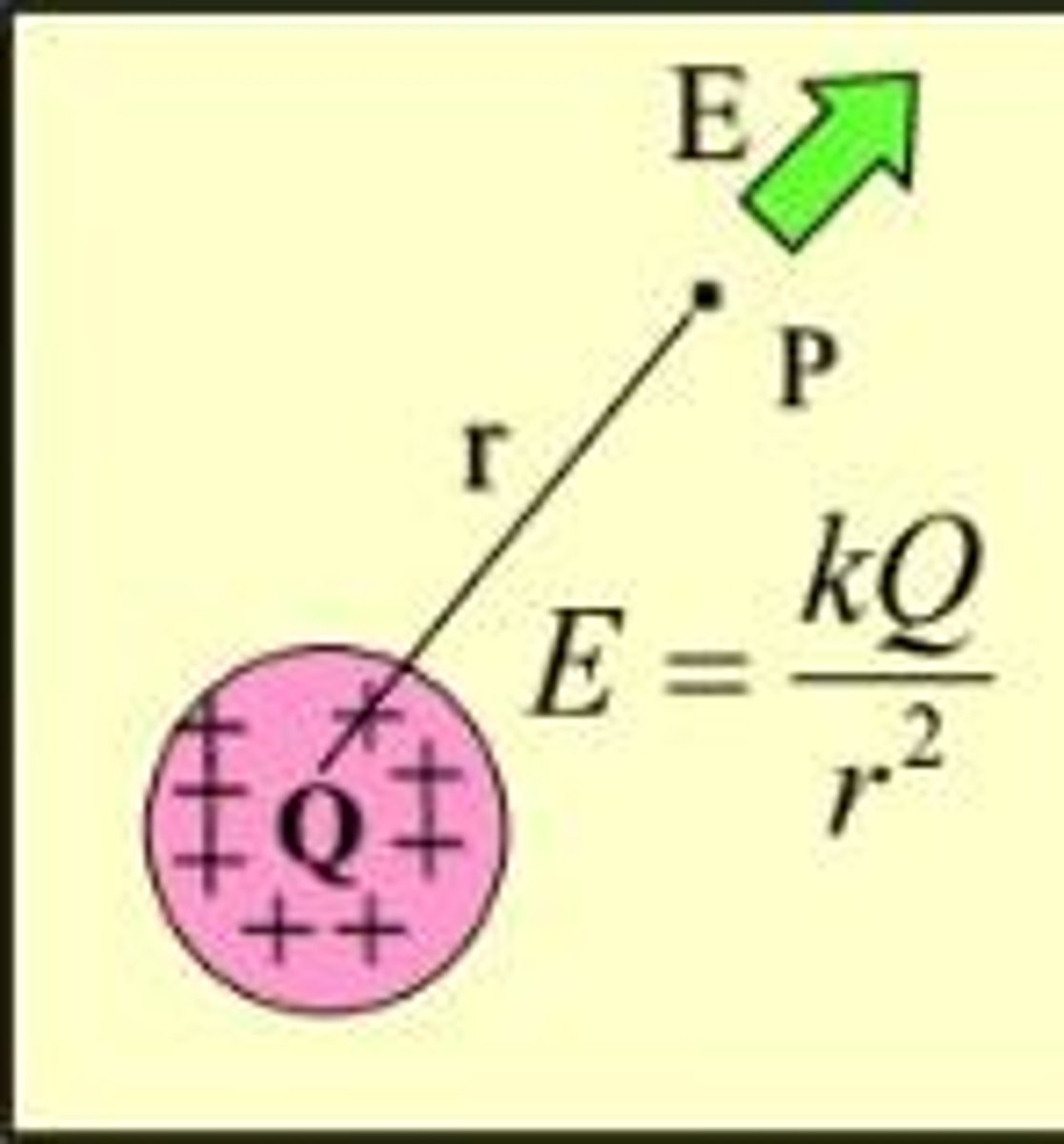
Test charge +q
Consider a test charge +q placed at P a distance r from Q.
Resultant electric field
The resultant field E in the vicinity of a number of point charges is equal to the vector sum of the fields due to each charge taken individually.
Spherical symmetry
A condition where the electric field is constant.
Electric flux
It is a term used in physics and mathematics to describe the flow of a physical quantity through a surface.
Work (Fd)
Positive if an applied force F is in the same direction as the displacement d.
Rate of flow of electric field
The rate of flow of electric field through a given surface.
Flux dependence
Flux depends on the strength of E, on the surface area, and on the relative orientation of the field and surface.
Electrical work
An external force F moves +q from A to B against the field force qE.
Potential energy U
At level B, the potential energy U is: U = qEd (Electrical).
External force Fe
The external force Fe against the E-field increases the potential energy.
Surface orientation
Surface is face-on to the electric field: E and A are parallel (EA).
Electric Potential
The work done in bringing a unit positive test charge from ground or infinity to another point B.
Flux of Electric Field
The measure of the electric field passing through a surface.
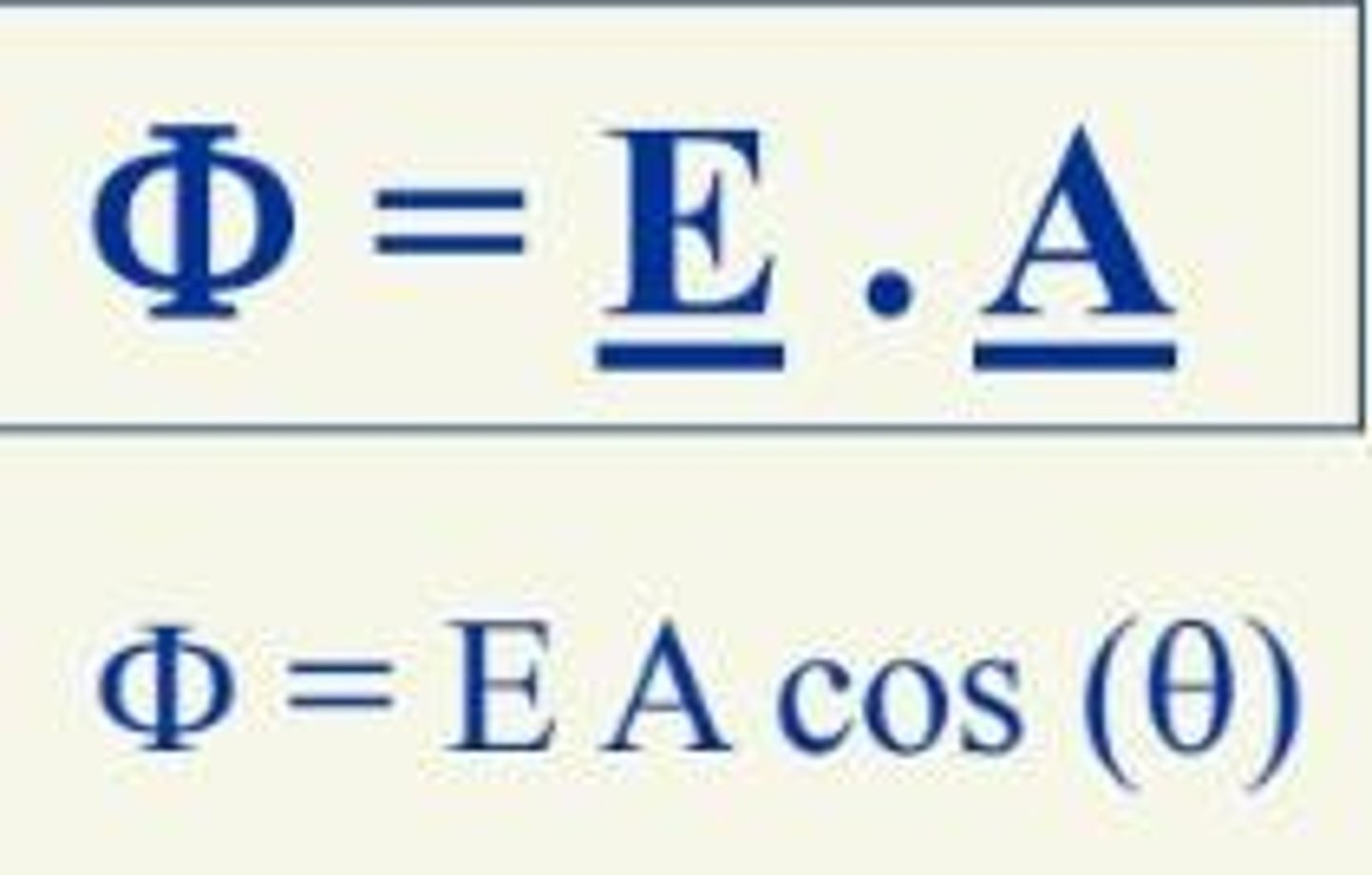
Potential of One Volt
A potential of one volt at a given point means that a charge of one coulomb placed at that point will experience a potential energy of one joule.
Unit of Electric Potential
Joules per Coulomb (J/C)
Energy Unit
electron volt (eV) 1 eV = 1.60 x 10^-19 J
Gaussian Surface
In a Gaussian Surface (closed surface), flux is positive when it points outward, while it is negative when it points inward.

Work Done
The work done in moving this charge from point A to point B is this force (F) multiplied by a distance (d).
Net Electric Flux
The net electric flux through a closed surface is directly proportional to the net charge inside that surface.
Potential Difference
Potential difference is designated as VAB and is found by subtracting the potential at point A from the potential at point B.
Capacitance
The capacitance depends only on physical parameters (the radius r) and is not determined by either charge or potential.
Capacitance of Parallel-Plate Capacitor
The capacitance of a parallel-plate capacitor is affected by the area of plates, distance between the plates, and insulating material or dielectric between them.
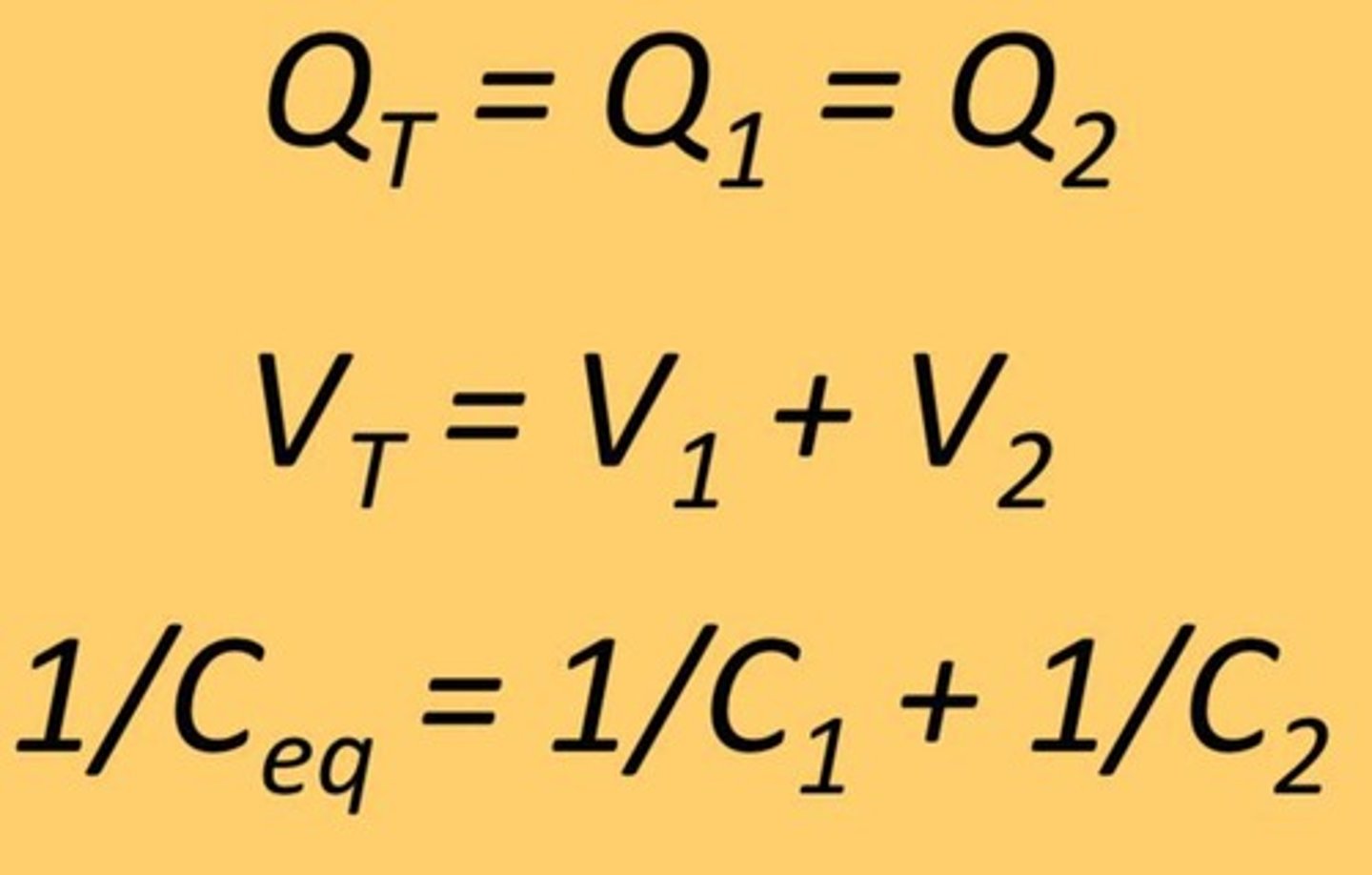
Equipotential Surfaces
These are always perpendicular to the direction of the electric field (the field lines).
Potential Lines
Potential lines indicate surfaces at the same electric potential, and the spacing is a measure of the rate of charge of the potential.
Energy Stored in Capacitors
Energy stored in a capacitor is electrical potential energy, and it is thus related to the charge and voltage on the capacitor.
Energy Stored in a Capacitor Formula
The energy stored in a capacitor is U = ½ QV where Q is the charge on a capacitor with a voltage V applied.
Capacitor
A device for storing electric charges.
Capacitance (amount of charge)
The amount of charge a capacitor can store.
Electric Field and Electric Potential
The electric field exists if and only if there is an electric potential difference.
Work and Electric Potential Law
The work done by a force on an object to move it from point A to point B is opposite to the change in the potential energy.
Positive and Negative Charge Potential
The potential due to a positive charge is positive; the potential due to a negative charge is negative.
Flux Angle Relationships
When angle > 90 degrees, the flux is negative; when angle = 90 degrees, the flux is zero; when angle < 90 degrees, the flux is positive.
Capacitor
It consists of two metal plates separated by an insulator (dielectric).
Dielectric
An insulating material such as paper or plastic between the plates in many capacitors.
Capacitance
The capacitance (C) of a conductor is defined as the ratio of the amount of charge (Q) in one plate to the potential difference (V) between the plates.
Capacitance in Farad
One farad (F) is the capacitance of a conductor that holds one coulomb of charge for each volt of potential difference.
Electrical Circuit Symbols
The following symbols are often used: [symbols not provided in the notes].
Electric Current
It is the rate of the flow of charge Q through a cross-section A in a unit of time t.
Ampere
One ampere A is charge flowing at the rate of one coulomb per second.
Resistivity
The ability of a material to oppose electric current.
Conductivity
The ability of a material to allow current flow depends on its resistivity (ρ) and conductivity (σ).
Conventional Current
Electric fields and potential are defined in terms of +q, so we will assume conventional current (even if electron flow may be the actual flow).
Electron Flow
The motion of +q from + to - has the same effect as the direction of e- flowing from - to +.
Resistance
It is a measure of how strongly a material opposes electric current.
Temperature and Resistance
When a metal's temperature increases, its resistance increases.
Relationship between Resistivity and Conductivity
Resistivity and conductivity are inversely related.
Minimizing Temperature Effects
Engineers minimize the effects of temperature on electrical resistance by using low-temperature coefficient materials.
High-Voltage Power Lines
High-voltage power lines are made of aluminum instead of steel because aluminum is lightweight, has good conductivity, and is more corrosion-resistant.
Capacitance Increase
The capacitance increases when the space between the conductors is filled with dielectrics.
Purpose of Dielectrics
Dielectrics are used to maintain a physical separation of the plates and minimize charge leakage, especially when high voltage is applied.
Complex Circuits
For complex circuits, reduce the circuit in steps using the rules for both series and parallel connections until you are able to solve the problem.
Charge Leakage
Dielectrics help to reduce the possibility of charge leakage by maintaining a physical separation of the plates.
Electric Field Strength
Dielectrics increase the effective capacitance by reducing the electric field strength, allowing for the same charge at a lower voltage.
Ohm's Law
It states that the current I through a given conductor is directly proportional to the potential difference V between its end points.
Electrical Resistance (R)
A property of materials that suggests the current in glass is much less than for steel or iron.
Factors Affecting Resistance
The length L of the material, cross-sectional area A of the material, and temperature T of the material.
Ohmic Materials
Materials that follow Ohm's Law.
Non-Ohmic Materials
Materials that do not follow Ohm's Law.
Length (L)
Longer materials have greater resistance.
Cross-sectional Area (A)
Larger areas offer less resistance.
Temperature (T)
Higher temperatures usually result in higher resistances.
Resistivity
A property of a material that determines its electrical resistance R.
Conductivity
The ability of a material to conduct electric current.
Electric Power
The rate at which electric energy is expended, or work per unit of time.
Calculating Power
Using Ohm's law, we can find electric power from any two of the following parameters: current I, voltage V, and resistance R.
Ohm's Law Formula
V = IR.
Resistivity Unit
The unit of resistivity is the ohm-meter (ohm•m).
Electromotive Force (EMF)
The energy per unit electric charge that is imparted by an energy source.
Source of Electromotive Force
Devices like batteries, power lines, and wind generators that provide the potential difference necessary for electric current.
Ohmic Conductors
Conductors that work on the principle of ohm's law.